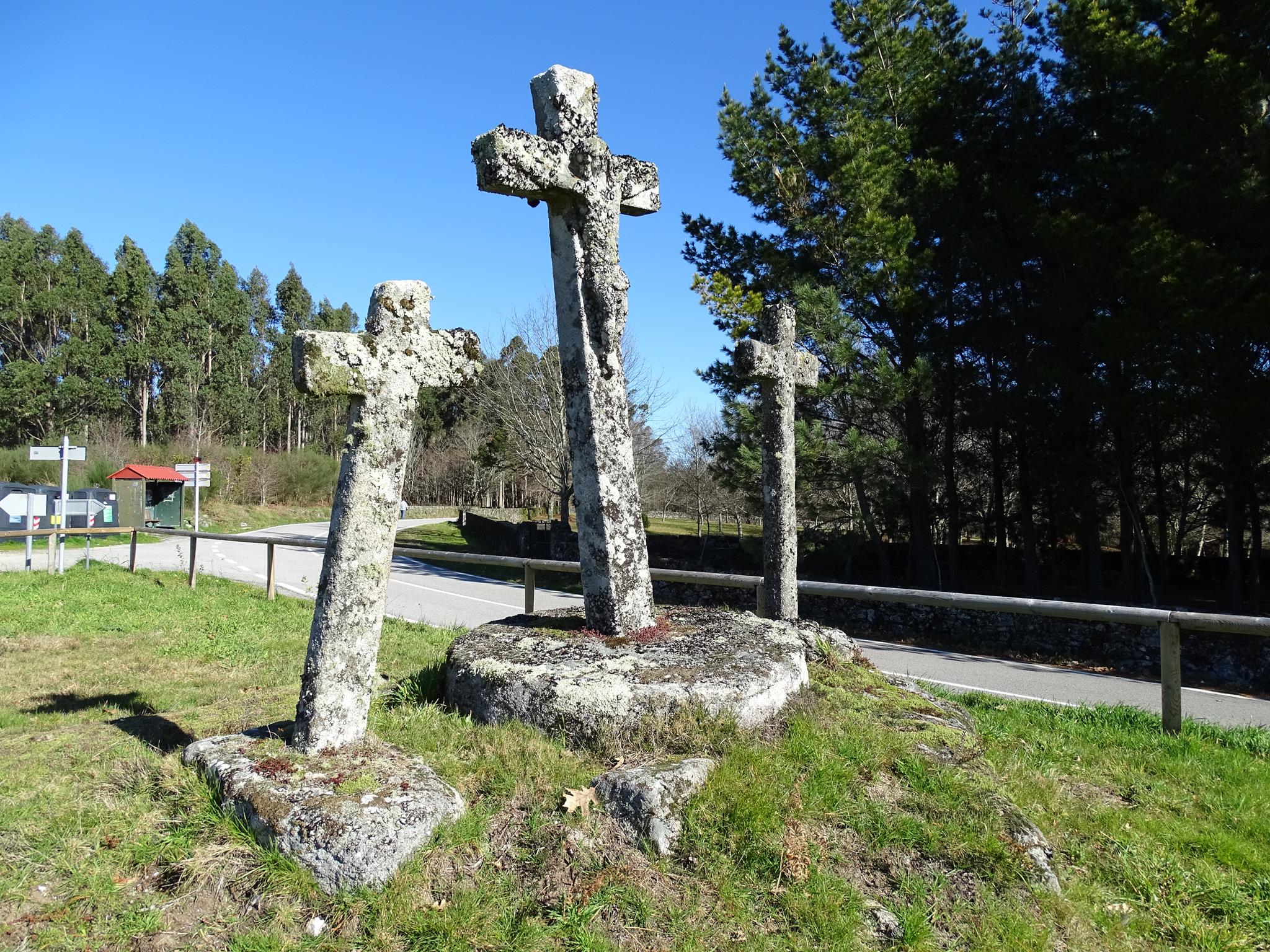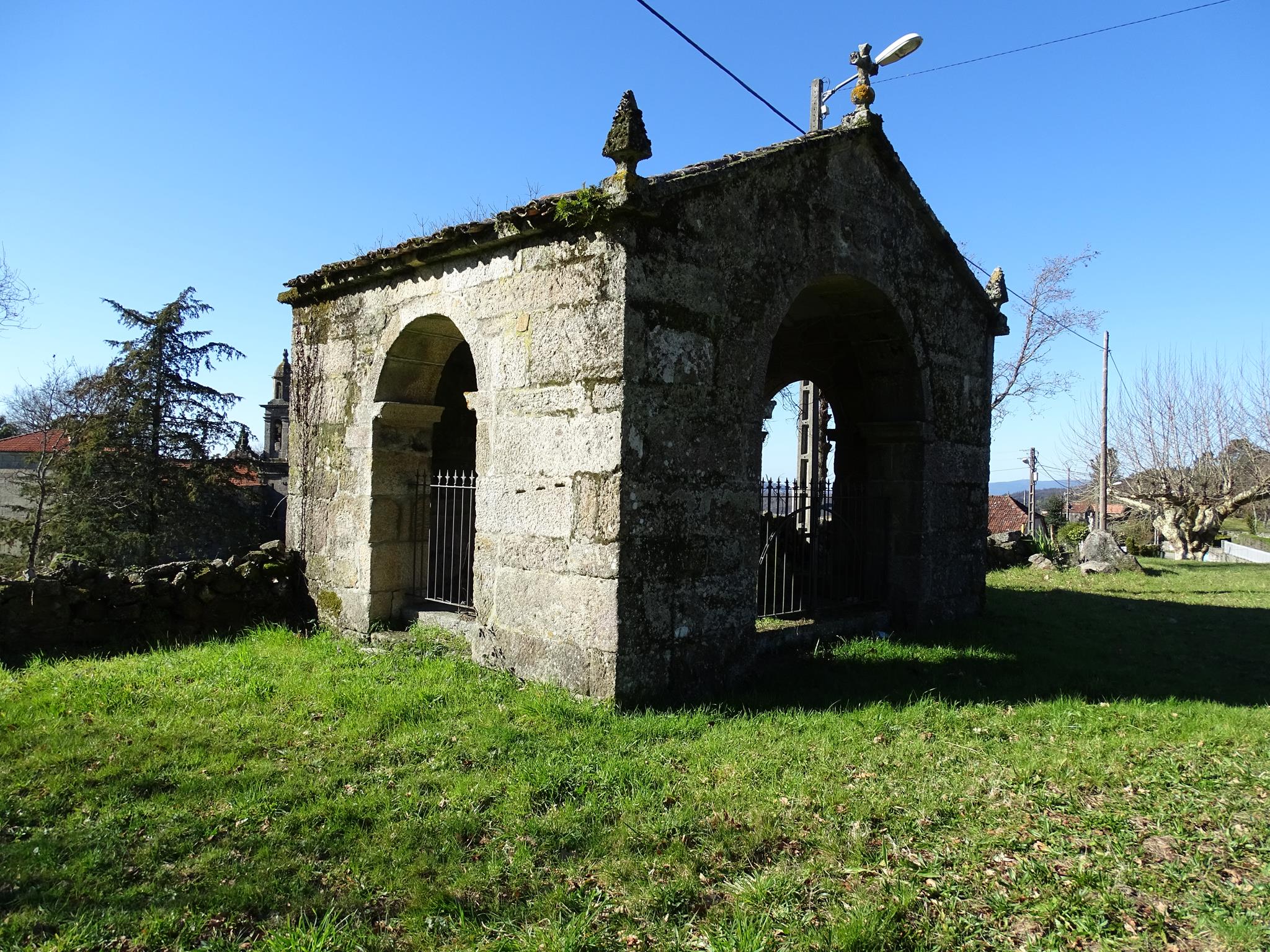Calvary of Crosses
Three crosses from the late eighteenth century. The highest cross has a circular pedestal. The arms and the head of the cross finish in a rectangle. The Christ appears completely stuck to the shaft; this figure, of rustic workmanship, appears to be very worn. It shows the reclining head, long hair and crown, with well defined ribs. The loin cloth is tied with a single lateral knot. The arms barely support the weight of the body, having the hands fastened with a large central nail. At the foot of the Christ, on the lower part of the cross, a rhombus can be seen carved in relief with the ends finished in fleur-de-lis. Inside, there is a Greek cross that also has a Fleur-de-lis. Beneath this ornament can be found the following inscription:
AQUÍ / MUR / IOEL / RED / ENT / ORD / LAVI / DA
An ancient Via Crucis surrounded the property of the parish (igrexario) of St Andrew of Anceu. Most of the crosses were located in this area, which today appears divided by the road. Most of the Stone crosses and crosses of popular workmanship are not dated and their maker is unknown.



